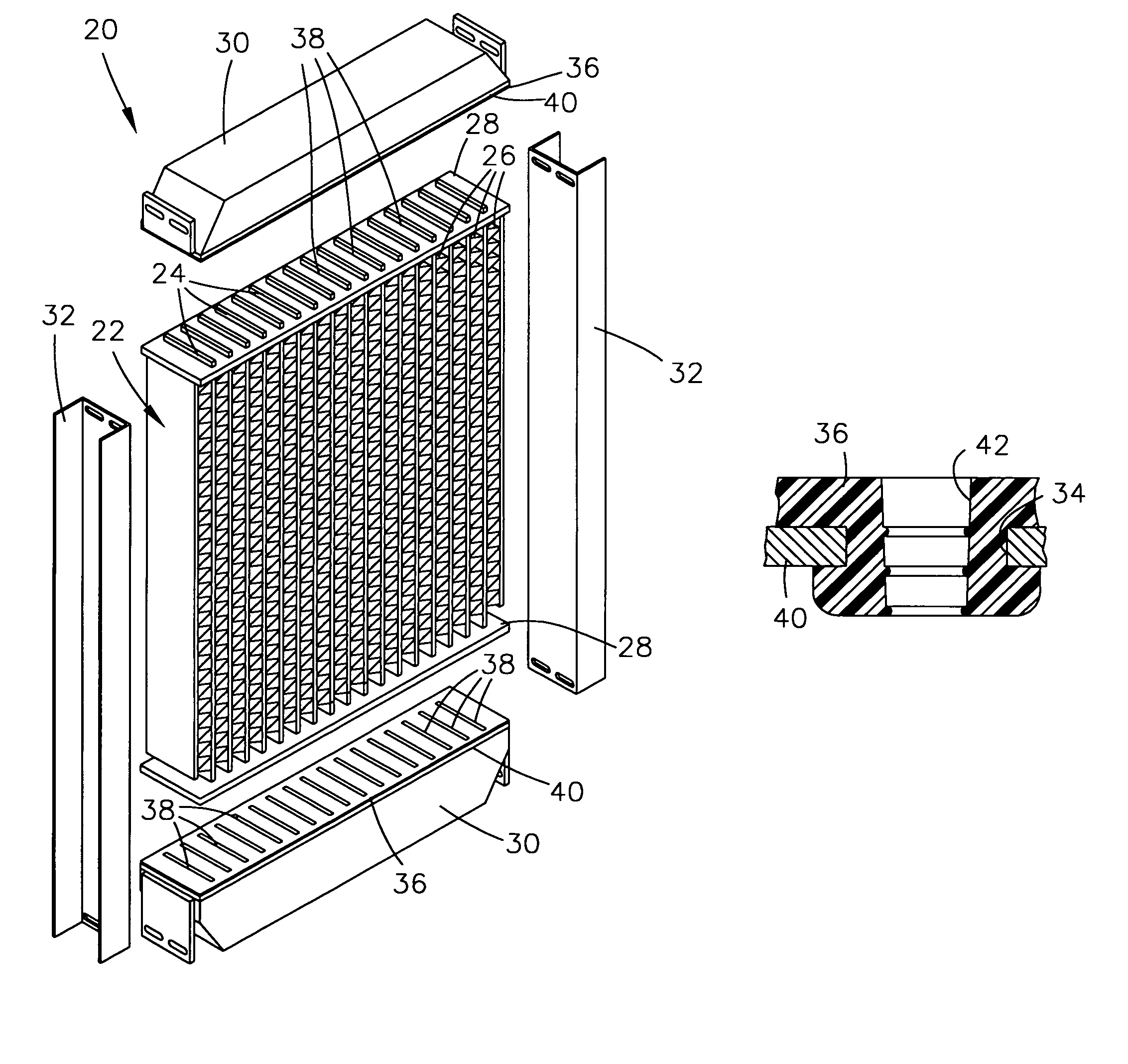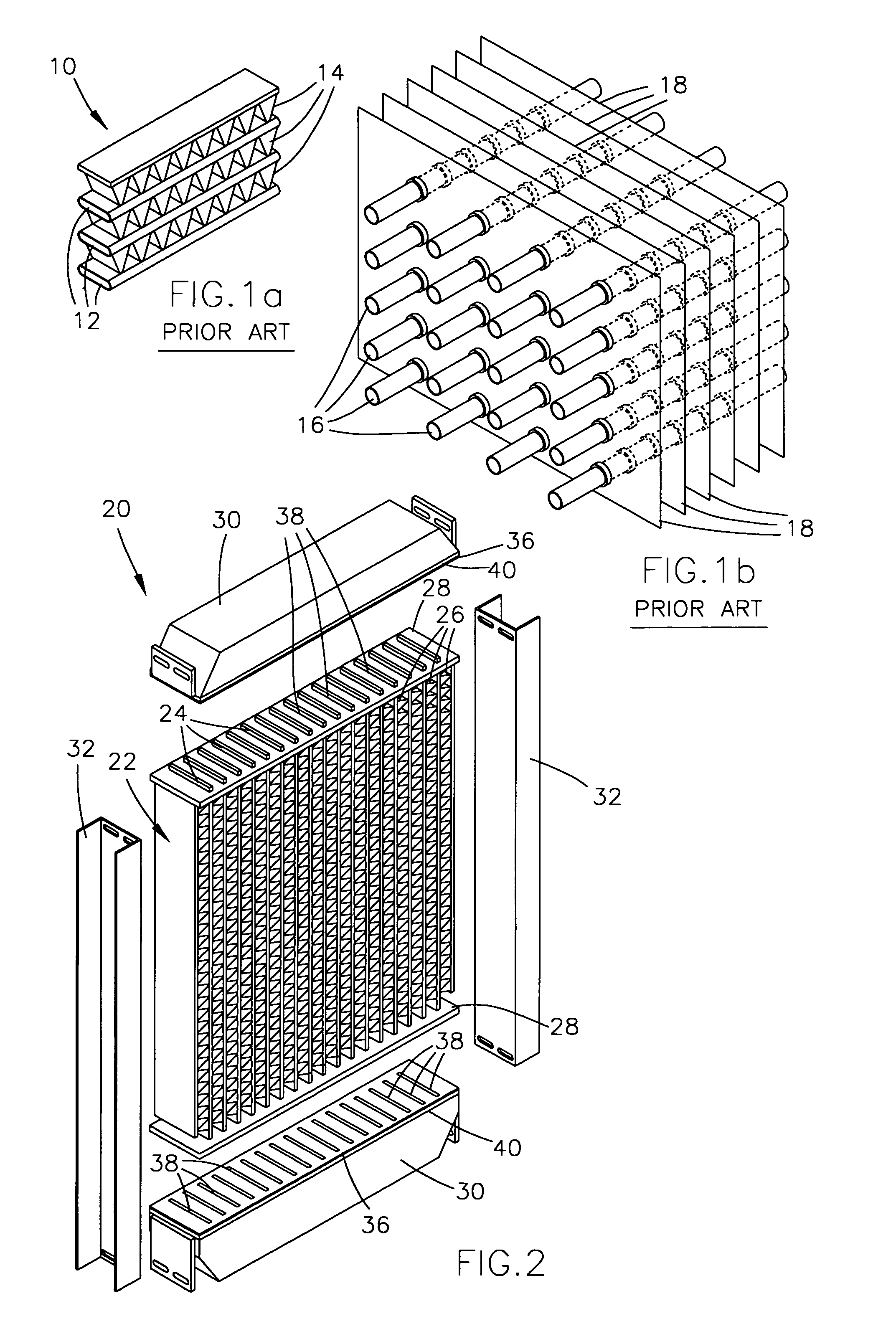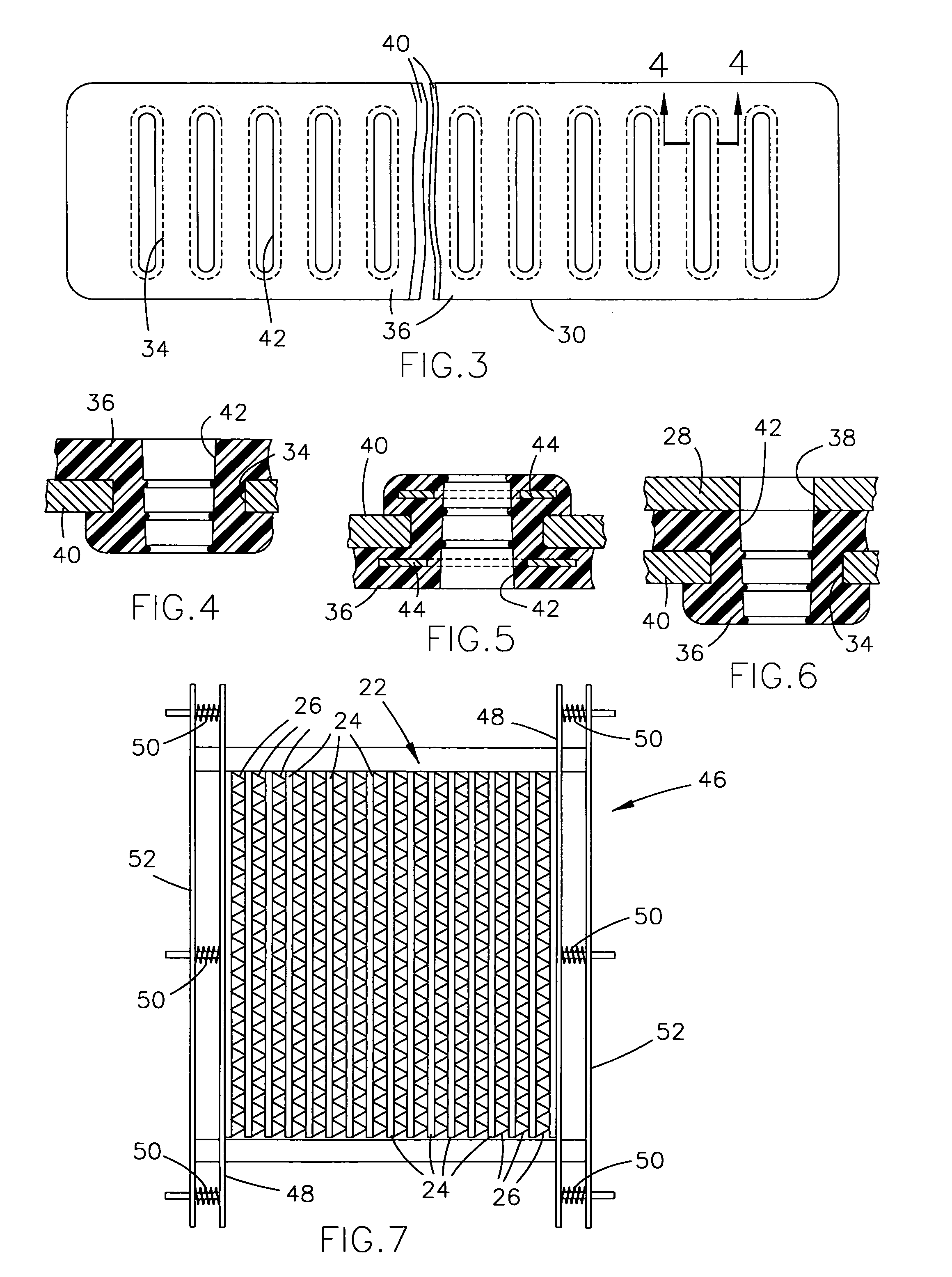Modular heat exchanger having a brazed core and method for forming
a heat exchanger and module technology, applied in the direction of lighting and heating apparatus, stationary conduit assemblies, hollow objects, etc., can solve the problems of large drying oven and furnace, large construction cost, and inadequate heat exchangers for more physically demanding applications, etc., to achieve greater flexing, reduce equipment downtime, and improve the effect of durability
- Summary
- Abstract
- Description
- Claims
- Application Information
AI Technical Summary
Benefits of technology
Problems solved by technology
Method used
Image
Examples
Embodiment Construction
[0031]An improved modular heat exchanger is provided that is suitable for automotive applications, and particularly radiators for heavy duty equipment. FIG. 2 represents a heat exchanger 20 that incorporates the teachings of this invention, and includes a brazed core assembly 22 preferably composed of flat-type cooling tubes 24 and sinusoidal centers 26. The inclusion of a brazed core assembly 22 in the heat exchanger 20 of this invention represents a significant improvement over prior art modular heat exchangers because of enhanced heat transfer efficiencies associated with the use of flat tubes 24, sinusoidal centers 26, and a tube-to-center braze joint. While prior art modular heat exchangers have often required the use of mechanically-joined round tubes and fins in order to maintain positional tolerances for the tubes, the brazed core assembly 22 of this invention is brazed in a manner that avoids core shrinkage and therefore maintains the required positional tolerances for mati...
PUM
| Property | Measurement | Unit |
|---|---|---|
| thickness | aaaaa | aaaaa |
| thickness | aaaaa | aaaaa |
| height | aaaaa | aaaaa |
Abstract
Description
Claims
Application Information
 Login to View More
Login to View More - R&D
- Intellectual Property
- Life Sciences
- Materials
- Tech Scout
- Unparalleled Data Quality
- Higher Quality Content
- 60% Fewer Hallucinations
Browse by: Latest US Patents, China's latest patents, Technical Efficacy Thesaurus, Application Domain, Technology Topic, Popular Technical Reports.
© 2025 PatSnap. All rights reserved.Legal|Privacy policy|Modern Slavery Act Transparency Statement|Sitemap|About US| Contact US: help@patsnap.com



